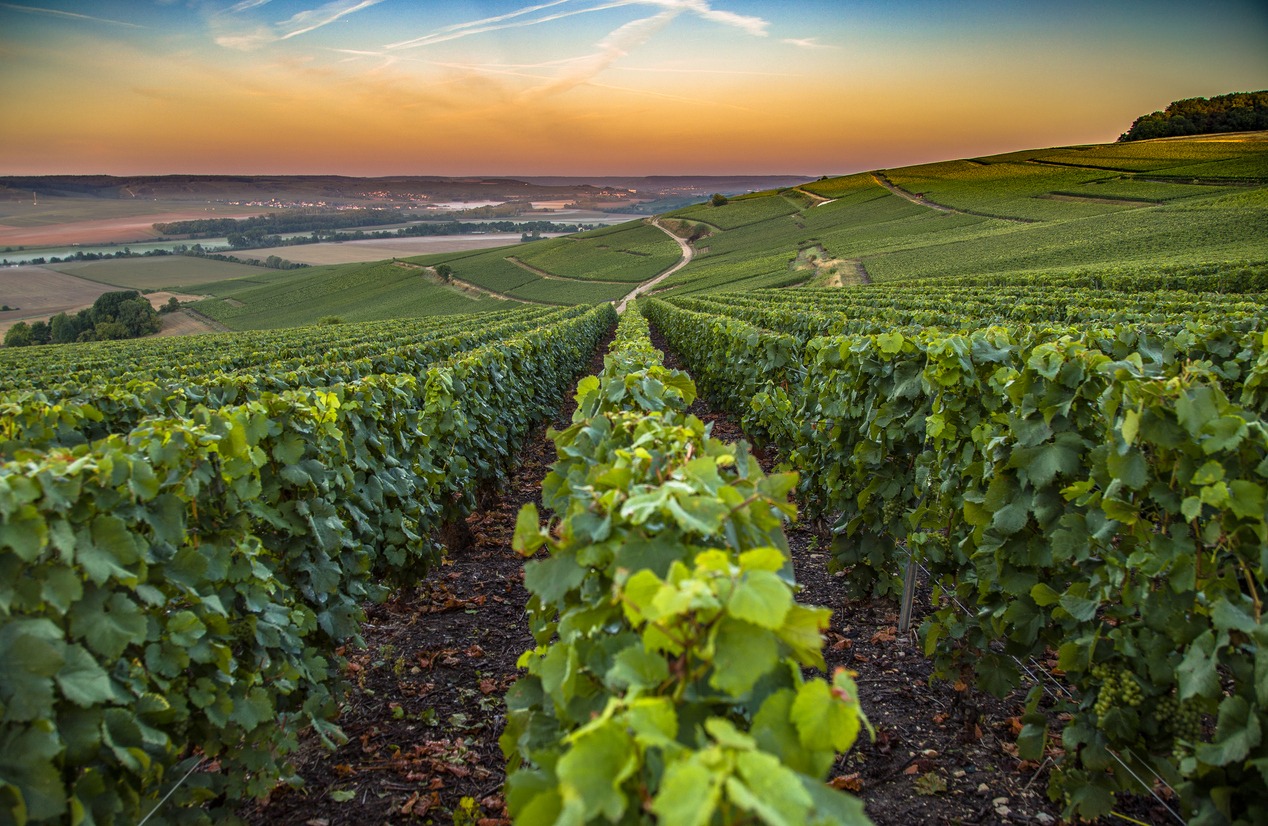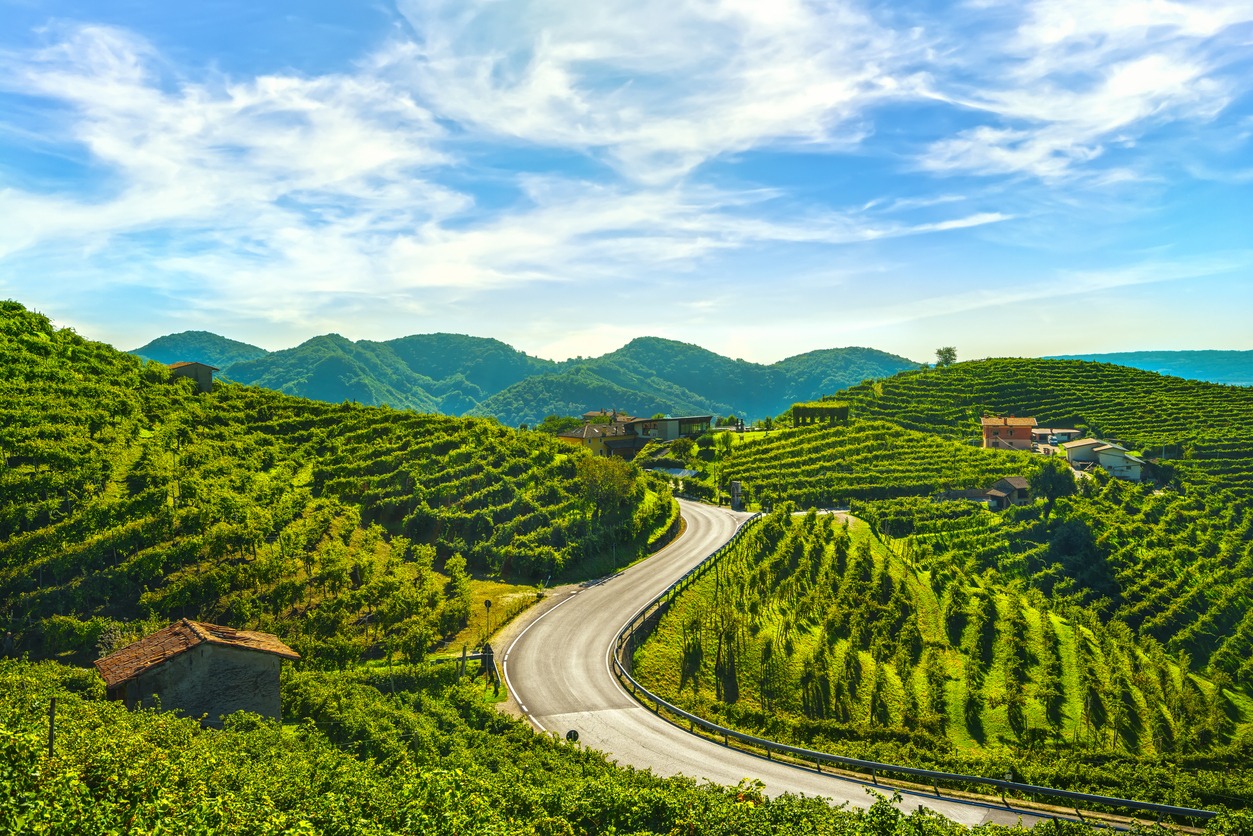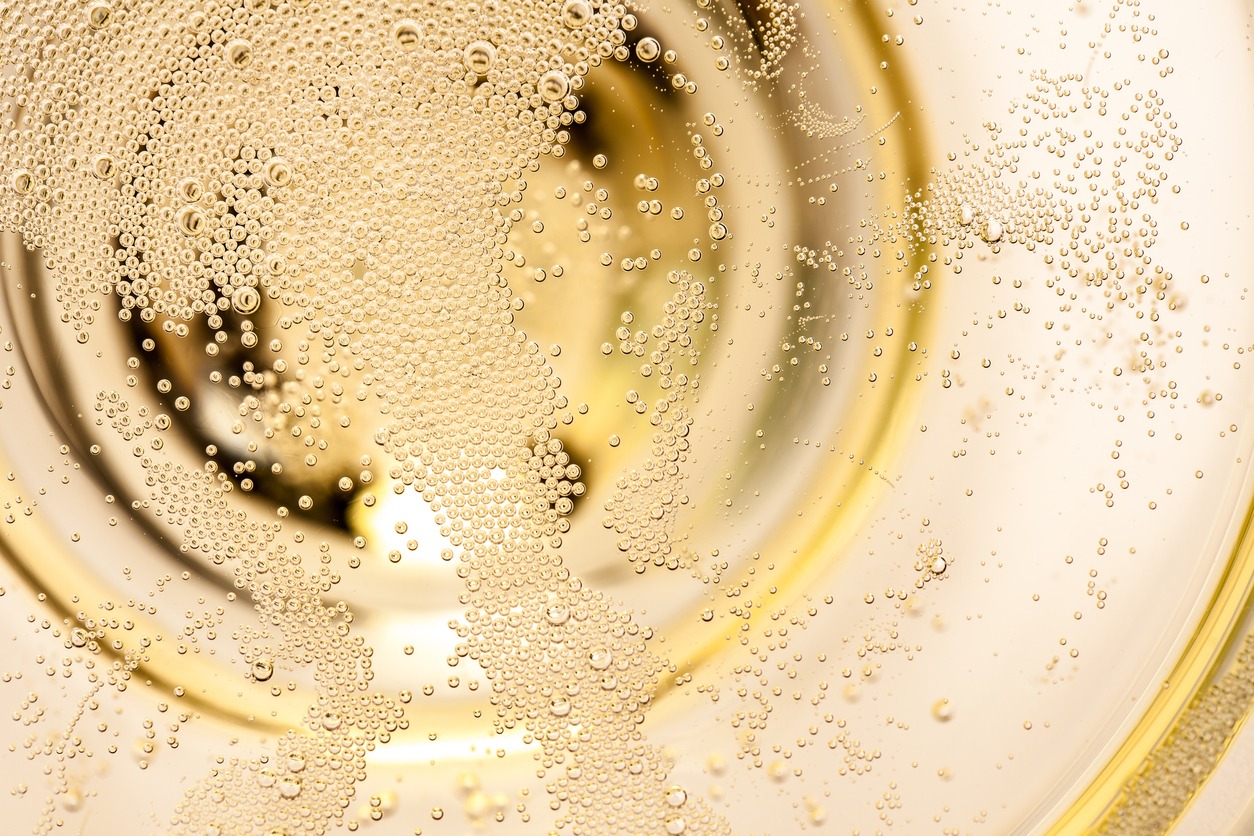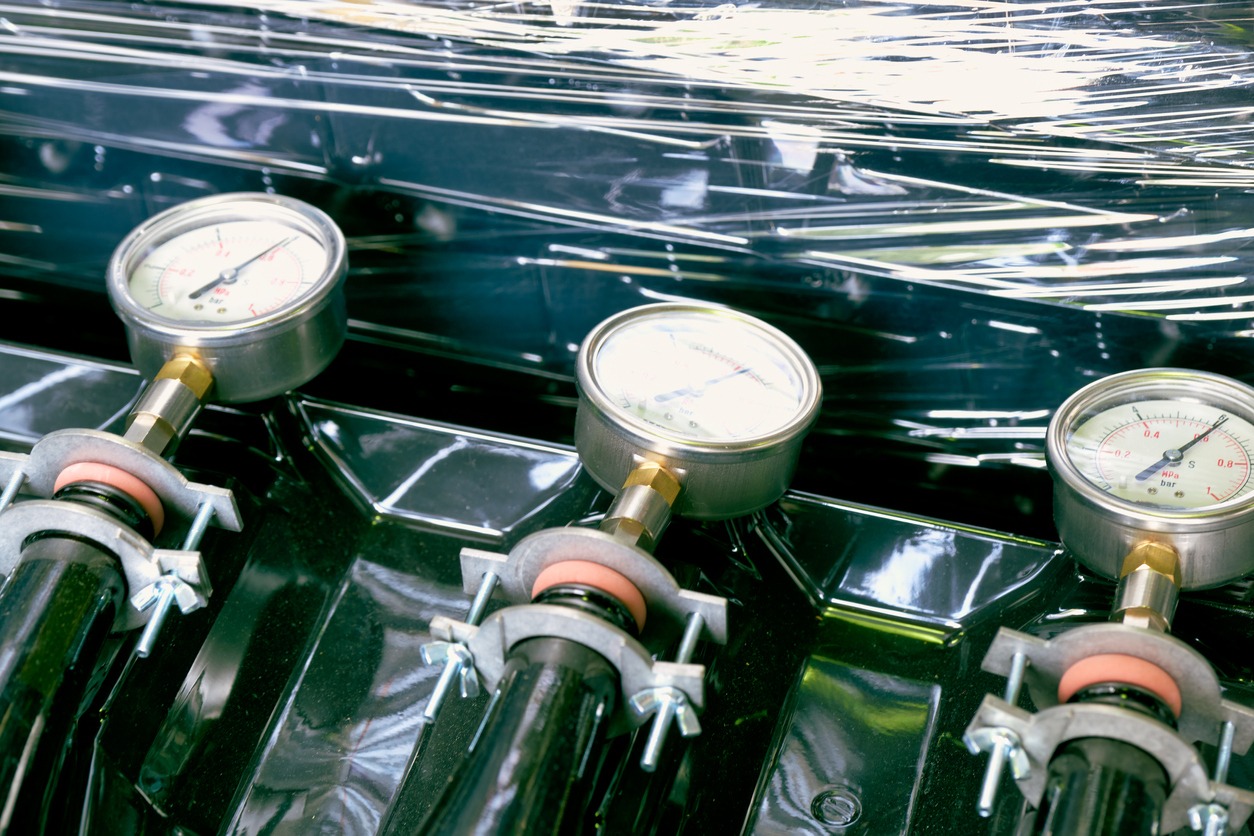Champagne and Prosecco are renowned sparkling wines that share the characteristic effervescence which has made them popular for celebrations and toasts around the world. However, despite both being sparkling wines, they possess distinct differences that set them apart. Originating from specific regions, Champagne from France and Prosecco from Italy, they are not only geographically distinct but also have unique production methods and grape varietals that contribute to their individual profiles.
Prosecco is crafted predominantly from the Glera grape in the Veneto region of Italy, using the Charmat method, where secondary fermentation occurs in large steel tanks. This process is less time-consuming and costly, which typically makes Prosecco more affordable. Its flavor profile is light, fruity, and aromatic, often featuring green apple, pear, and floral notes.
Champagne, on the other hand, hails from the Champagne region in France and is produced using the traditional method, a more labor-intensive process where secondary fermentation happens inside the individual bottles. Primarily made from Chardonnay, Pinot Noir, and Pinot Meunier grapes, Champagne has a more complex and varied palate with bready, biscuity flavors alongside citrus and mineral undertones. This method contributes to Champagne’s typically higher price point and esteemed reputation as a symbol of luxury and celebration.
Historical and Geographical Context
The distinct qualities of Prosecco and Champagne not only arise from their unique production methods but also from their deep-rooted origins and the diverse regions they hail from.
Origins of Prosecco and Champagne

Champagne region in France
Both Prosecco and Champagne are sparkling wines with rich histories. Champagne can trace its legacy back to the old wines of the Champagne region in France, which gained global acclaim for their distinctive quality and method of production. Prosecco, named after the former village of Prosecco (now part of Trieste), has gained prominence from the Veneto region of Italy, especially near the towns of Conegliano and Valdobbiadene.
Champagne Region of France
The Champagne region, located in the northeast of France, enjoys a cool climate and chalky soils, which are ideal for growing the three primary grapes used for Champagne: Chardonnay, Pinot Noir, and Pinot Meunier. A historic wine-growing area, it’s been recognized for producing sparkling wine since at least the 17th century. Moreover, the region’s unique method of secondary fermentation in the bottle, méthode champenoise, contributes to the wine’s complexity. The prestige of Champagne is protected by strict regulations, and only wine from this region can officially bear the name “Champagne.” The UNESCO World Heritage Site listing further highlights the Champagne region’s global significance.
Prosecco’s Veneto Region in Italy

Prosecco Hills, Unesco Site. Valdobbiadene, Veneto, Italy
Prosecco originates from the Veneto region, with a particular focus on the area between the towns of Conegliano and Valdobbiadene. The Glera grape is the dominant variety here, and the terrain ranges from the flat plains to the rolling hills, which are favorable for viticulture and impart different qualities to the Prosecco produced. The region’s sunny climate and the protection of the Dolomites to the north create a conducive environment for the Glera grapes to thrive. The wine produced here underwent a transformation from still to sparkling to meet international tastes, and much like Champagne, strict guidelines dictate what can be labeled as Prosecco, preserving its quality and heritage.
Grape Varieties and Vineyards
The distinction between Prosecco and Champagne begins in the vineyard, with each leveraging unique grape varieties and viticultural areas to produce their signature sparkling wines.
Distinct Grapes Used in Production
Champagne: This prestigious sparkling wine exclusively hails from the Champagne region of France, and it’s the unique blend of specific grape varieties that contributes to its distinguished profile. The three primary grapes used are Chardonnay, Pinot Noir, and Meunier (also known as Pinot Meunier). These grapes are cultivated with precision, adhering to strict appellation rules to maintain the integrity of the Champagne name. Occasionally, less common grape varieties like Arbane, Petit Meslier, and Pinot Gris (locally known as Fromenteau) are also permitted in the blend.
- Chardonnay: imparts finesse and lends to the ageing potential.
- Pinot Noir and Meunier: contribute body and a breadth of flavors.
Glera Grape and Other Varieties
Prosecco: Originating from the Veneto region of northeastern Italy, Prosecco is primarily produced from the Glera grape. The Glera grape defines Prosecco’s aromatic and fruity qualities which set it apart from Champagne. Under the DOCG (Denominazione di Origine Controllata e Garantita) regulations, a Prosecco must contain at least 85% Glera, with the remainder composed of local grape varieties such as Verdiso, Bianchetta Trevigiana, Perera, and Glera Lunga as well as international grapes like Chardonnay in some blends.
- Glera: leads to Prosecco’s lighter, pear and apple notes.
- Minor Varieties: may add complexity and regional character.
Viticulture and Harvesting Practices
Both Champagne and Prosecco regions impose their own unique viticulture and harvesting protocols to protect the quality and typicity of their wines. In Champagne, the climate is cooler, and the chalky soils provide a minerality that is evident in the wines. Grapes are often handpicked to ensure they are harvested at the optimal time for acidity and sugar levels, necessary for the second fermentation that gives Champagne its bubbles.
Prosecco vineyards in the Veneto benefit from a milder, Mediterranean climate, which is conducive to a larger harvest, typically resulting in wines that are more fruit-forward. The undulating hills of regions such as Valdobbiadene are renowned for their high-quality Prosecco production, with protective regulations ensuring traditional viticultural practices continue to thrive.
Winemaking Techniques
The distinction between Prosecco and Champagne primarily lies in the winemaking process, specifically the technique used for secondary fermentation which contributes to their unique characteristics.
Traditional Method vs Charmat Method
The Traditional Method, or Méthode Champenoise, is the cornerstone of Champagne production. In this process, the secondary fermentation occurs in the bottle, which imparts complexity and flavor through prolonged yeast contact. Bottles are manually or mechanically turned in a process called riddling to collect yeast deposits for removal.
In contrast, Prosecco employs the Charmat Method, where secondary fermentation takes place in large pressurized tanks, also known as the tank method. This method is more cost-effective and produces wines with a fresher, fruitier profile, primarily due to shorter yeast contact time.
Secondary Fermentation Processes
Secondary fermentation is pivotal in shaping the textures and bubbles in both wines.
- Champagne: Secondary fermentation occurs within each individual bottle, thus requiring the addition of yeast and sugar directly to the bottles. Over time, the interaction between the two produces carbon dioxide, which dissolves into the wine and creates fine, persistent bubbles.
- Prosecco: Here, fermentation happens en masse in sealed tanks, with the carbonation being captured in large volumes. When the desired pressure and alcohol level are reached, the wine is cooled, yeast is removed, and it’s bottled under pressure.
Influence of Yeast and Sugar on Flavor
Yeast and sugar play a vital role in defining the final taste profile.
- Champagne: A higher sugar content, known as dosage, may be added post-fermentation to balance acidity, contributing to a range of styles from brut (dry) to doux (sweet). Extended contact with yeast lees during the aging process imparts bready, toasty, or nutty flavors.
- Prosecco: Typically less sugar is added before the secondary fermentation, resulting in a wine that emphasizes its original fruity and floral characteristics. Prosecco’s limited interaction with yeast minimizes the development of the brioche-like flavors associated with Champagne.
Sensory Experience and Serving Suggestions
This section explores the distinctive sensory characteristics of Prosecco and Champagne and provides practical guidance on serving and pairing to enhance enjoyment.
Aroma and Flavor Profiles
Prosecco typically exhibits a bouquet of aroma that includes apple, pear, and floral notes such as honeysuckle. The flavor is often described as fruity and floral, with a presence of white peach and sometimes honey and almond nuances. In contrast, Champagne tends to have a more complex flavor profile due to longer aging on the lees, imparting notes of brioche and toast along with fruit expressions of citrus and sometimes apple.
Best Practices for Serving
Prosecco is best served well-chilled, between 38-45°F, in a tulip glass to help focus the aroma and preserve the bubbly effervescence. Champagne is also served chilled, ideally at 47-50°F, and benefits from a flute or even a white wine glass, which allows its fine bubbles and flavor complexity to express themselves fully.
Food Pairing Recommendations
Prosecco: Complements light appetizers and seafood dishes, enhancing flavors with its fruity and floralcharacter.
- Seafood: Grilled prawns, oysters
- Appetizers: Melon and prosciutto, light cheeses
Champagne: Ideal with richer fare, its brioche and almond notes and aging potential make it a versatile partner.
- Meats: Chicken in a cream sauce, duck
- Desserts: Almond biscotti, tarte Tatin
These pairings emphasize the sensory harmonization between food and wine, enhancing the taste experience.
Labeling, Categories, and Price Points
The labels on a bottle of Prosecco or Champagne not only reflect their origin but also denote the quality, sweetness, and production method, factors that significantly influence their price points and consumer categorization.
Understanding DOC and DOCG Labels
Prosecco must comply with specific regulations to carry the Denominazione di Origine Controllata (DOC) label, indicating it originates from designated areas in Italy. The higher tier, Denominazione di Origine Controllata e Garantita (DOCG), such as Prosecco from Conegliano Valdobbiadene, signifies a stricter quality control and a more precise origin. Champagne, on the other hand, does not use DOC or DOCG but must be from the Champagne region in France to use the name legally.
Styles: Brut, Extra Brut, and Sec
- Brut and Extra Brut indicate the dryness of the wine. Brut Champagne or Prosecco contains up to 12 grams of residual sugar per liter, making it dry, whereas Extra Brut has even less, at less than 6 grams. These styles cater to those who prefer less sweetness in their sparkling wines.
- Sec, meaning dry in French, is actually a bit sweeter than Brut. However, Sec wines usually contain between 17 and 32 grams of sugar per liter.
The style category plays an important role in the flavor profile and can affect consumer choice and price.
Economic Aspects and Availability
Sparkling wines come at varying price points, often reflecting the production process involved. Non-vintage sparkling wines, which blend multiple years’ harvests, are typically more affordable. Vintage sparklings, which come from a single harvest year, such as vintage Champagne, are more expensive and are considered a luxury item. For Prosecco, the price is generally lower due to a less labor-intensive production process, like the tank method used for Asti. Cava from Spain, while not discussed as often, is another sparkling wine that fits into the pricing spectrum, often similar to Prosecco. Availability is widespread for non-vintage options, with prices for Prosecco typically ranging from $20 to $30, while Champagnes tend to start at higher price points due to their costly production method.
Conclusion
While Prosecco and Champagne both grace our celebrations and special occasions with their sparkling presence, they are distinct in their production methods, regional origin, flavor profiles, and cultural significance. Champagne, with its meticulous traditional method of production, emanates from the Champagne region of France and is often associated with luxury and prestige. It offers a complex flavor palette derived from its aging process and the climate of its region. On the other hand, Prosecco hails from the Veneto region of Italy and is celebrated for its approachable, fruity, and floral characteristics, attributable to the Charmat method of production. It’s often perceived as a more affordable, versatile, and lighter alternative to Champagne, making it suitable for a wide range of occasions and pairings.
Understanding these differences not only enhances our appreciation of these celebrated beverages but also guides us in making informed choices suitable for our tastes and occasions. Whether you prefer the rich, nuanced flavors of Champagne or the fresh, approachable notes of Prosecco, both wines have their unique charm and place in the world of sparkling wines. The next time you find yourself selecting a bottle for a celebration, consider the characteristics of each to complement your event, menu, and personal preference, and toast to the rich history and artistry behind each effervescent sip.



